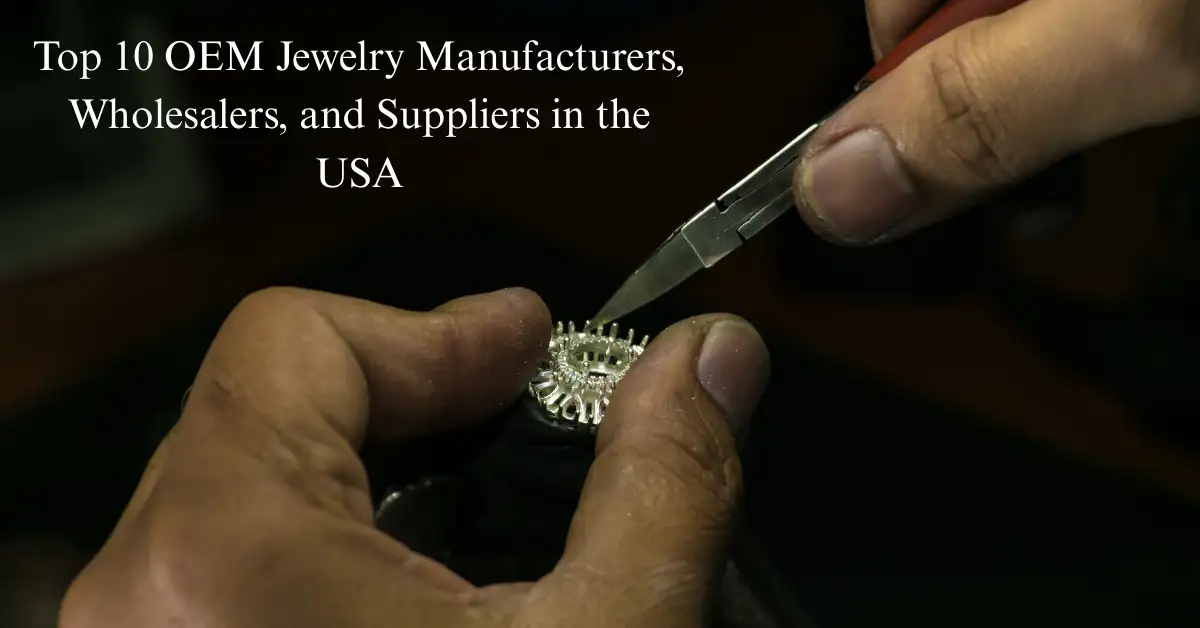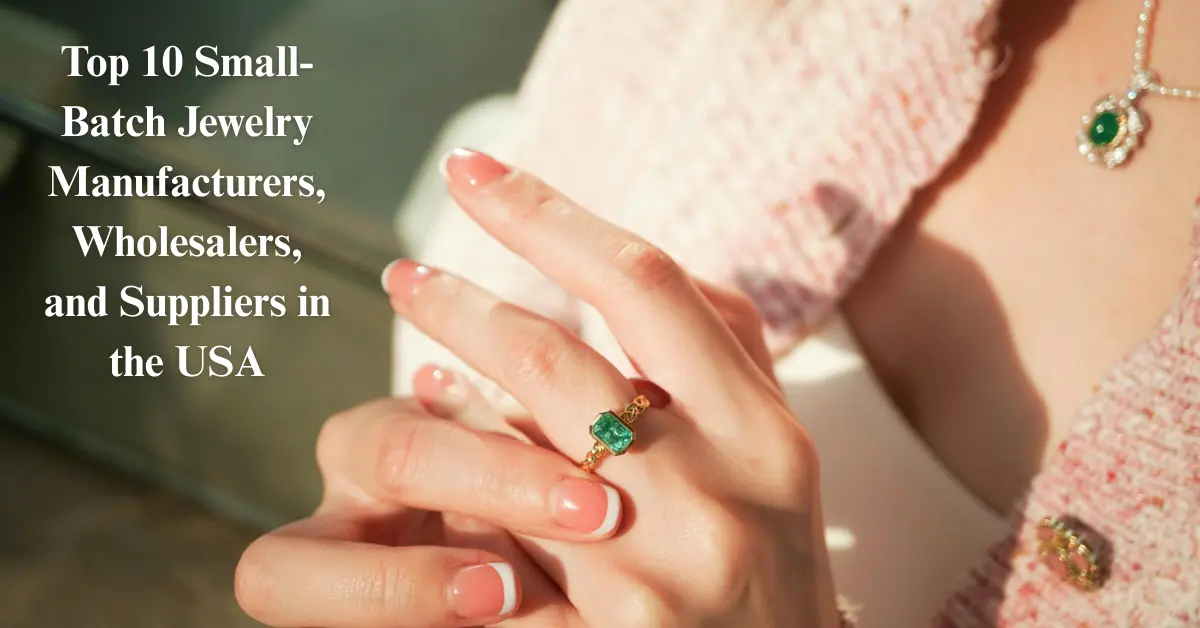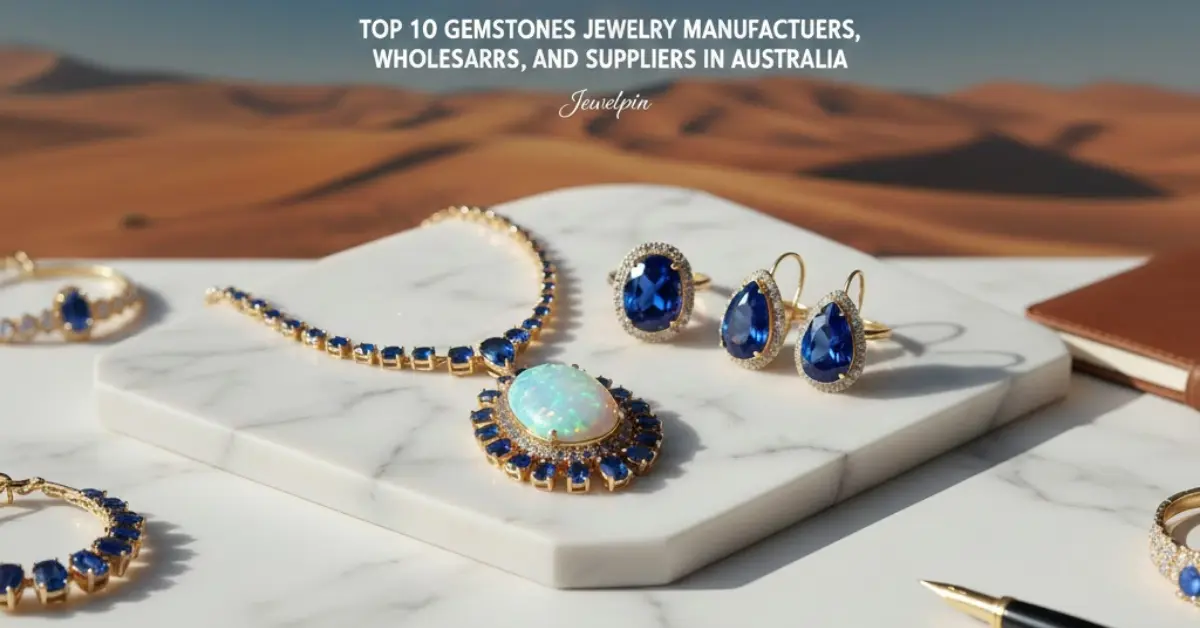09 October, 2025

top 10 oem jewelry manufacturers wholesalers and suppliers in the usa

outsource jewelry manufacturing top 10 companies in the world

top 10 small batch jewelry manufacturers wholesalers and suppliers in the usa

top 10 gemstones jewelry manufacturers wholesalers and suppliers in australia
The emerald, a gemstone known for its vivid, saturated green color, has captured the imagination of people for centuries. Also, it is a powerful symbol of royalty, rebirth, and eternal spring. Its beauty comes not from a crystal, but from its unique characteristics.
Emerald is a gem-quality variety of the mineral beryl, and it derives its green color from trace amounts of vanadium, chromium, or iron. In addition to the color, its story of formation deep within the Earth provides it with tiny, mossy patches.
For jewelers and retailers, understanding the various types of emeralds is essential. It gives you the ability to transfer the right knowledge to your clients, justify pricing, and sell with confidence.
This guide dives deep into the world of emeralds, helping you understand their various types and what makes each one so special.
The country of origin plays a significant role in an emerald's value. Also, different regions produce emeralds with unique characteristics, colors, and clarity. Here are all the types of emeralds that the US market highly values.
Colombia produces what many consider the finest emeralds in the world. Colombian emeralds command the highest prices in the market due to their superior quality and beautiful, pure color. They have a vivid, slightly bluish-green hue. This specific color, often called "green with a drop of oil," sets them apart.
Colombia has three main mining regions: Muzo (the highest quality mine), Chivor, and Coscuez. Each mine produces emeralds with a slightly different character, but all are known for their exceptional purity of color. In addition, a high-quality Colombian emerald possesses a deep, saturated color that truly makes it glow. They often have noticeable inclusions, but their distinctive color and rarity make them the most sought-after emeralds on the market.
Zambia has become a major player in the emerald market, now contesting Colombia's dominance with a different kind of beauty. Their emeralds have a vivid, slightly bluish-green color. Also, they often have a bit more transparency and fewer inclusions than many Colombian emeralds, giving them a cleaner look.
Zambian emeralds offer excellent value for money. Additionally, they provide a stunning alternative to Colombian stones without the ultra-high price tag. Many jewelers in the USA recommend Zambian emeralds for clients who value a cleaner stone and a slightly different hue. Apart from that, their durability and brilliance have earned them a strong reputation in the US market.
Brazil has a long history of producing emeralds, and its stones have a distinct character. Brazilian emeralds typically have a lighter, more yellowish-green color than the Colombian and Zambian emeralds. Also, they often have more visible inclusions, but this makes them a great option for affordable, commercial-grade jewelry.
Brazil produces a large volume of emeralds, making them more accessible to the general market. Additionally, they provide an excellent entry point for new collectors or for retailers who need a wide variety of pieces at different price points. A high-quality Brazilian emerald can still be a beautiful, vibrant stone, perfect for everyday jewelry.
Understanding an emerald’s origin and quality is vital, but a true jeweler also knows about treatments. The vast majority of emeralds on the market have some form of treatment to improve their appearance. Knowing this helps you sell with integrity.
Almost all natural emeralds undergo a treatment called oiling or resin filling for the final finishing. Also, this is a common and accepted industry practice.
Oiling: This process involves placing the emerald stone in a colorless oil, like cedar oil, to fill any surface-reaching fractures. It is because the oil improves the stone's transparency and reduces the visibility of its "jardin." Also, the treatment is reversible and a standard enhancement for emeralds.
Resin Filling: This is a more permanent treatment. In this process, a resin is used to fill fractures and improve the clarity of the emerald. Also, the value of an emerald stone with this treatment is often lower than that of a similar stone with simple oiling.
As a retailer or wholesaler, you must disclose any treatment to your customers. This transparency builds trust in the customer. Apart from that, you can explain that treatments are a standard part of the emerald industry, and they allow more people to enjoy the beauty of this stone. You can also highlight the rarity of a stone that does not require any treatment, as these command the highest prices.
When you sell an emerald, you primarily deal with two types:
These emerald stones form naturally in the earth over millions of years. Also, their value comes from their rarity and unique character. They contain inclusions and small fractures, which tell the story of their journey.
These emeralds are also called synthetic emeralds or lab emeralds. These stones are chemically identical to natural emeralds. Additionally, these emeralds offer several advantages and come with a more affordable price. Apart from this, they often have better clarity and fewer inclusions. Apart from that, lab-grown emeralds give customers a beautiful, more budget-friendly option.
An emerald’s value depends on a few key factors beyond its origin. As a retailer, you must understand these to accurately grade a stone and explain its price to your customers.
Color is the most important factor when you are evaluating the emerald. It determines the 80% value of an emerald. So, you must consider three components of color: hue, tone, and saturation. Apart from this, a pure green color with a touch of blue is most desirable, with a medium to dark green tone and a highly saturated color that comes in real emeralds.
As we already discussed, emeralds contain inclusions. As a gemologist, you should accept and expect this. However, the clarity of an emerald still affects its value. Instead, you can look for stones where the "jardin" does not compromise the stone's transparency or durability. Also, a stone that looks too cloudy or has large, dark inclusions has a lower value.
A skillful cut enhances an emerald's color and brilliance. But remember, the most popular cut is the Emerald Cut–a rectangular or square shape with step-like facets. Also, this protects the stone from damage and highlights its color and clarity. Remember that other cuts, like cushion, oval, and round, also show off an emerald’s beauty. Apart from that, a good cut maximizes this stone's color and minimizes the inclusions.
A larger emerald, with all other factors being equal, has a higher value. However, a small, highly saturated emerald with clarity can cost a higher price than a large, pale, and included stone. Additionally, you must consider the quality factors before the size of emeralds.
Understanding the emerald types gives you the tool to connect and help in your business. It allows you to speak with authority and confidence about each stone's unique characteristics. Whether you are discussing a pure Colombian emerald or a brilliant Zambian stone, the knowledge helps you educate your clients. It allows them to appreciate their emerald's story. Additionally, this expertise builds trust and converts a buying experience of the customer into a meaningful connection. For retailers or wholesalers seeking a reliable source for high-quality emeralds from different origins, the JewelPin collection provides you with the same. So, it allows you to offer your customers the real gemstone.





